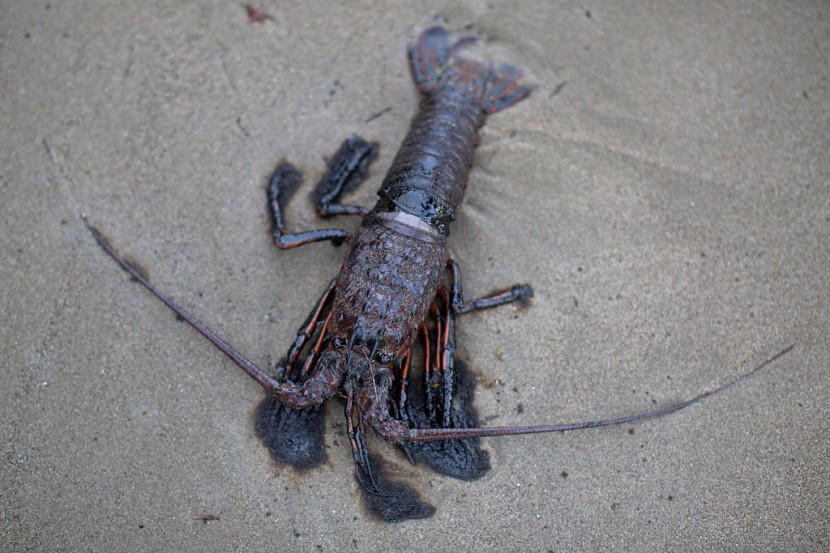
(Photo: by David McNew/Getty Images) GOLETA, CALIFORNIA - MAY 20: An oil-covered lobster lies dead on the beach after an oil spill near Refugio State Beach on May 20, 2015 north of Goleta, California. About 21,000 gallons spilled from an abandoned pipeline on the land near Refugio State Beach, spreading over about four miles of beach within hours. The largest oil spill ever in U.S. waters at the time occurred in the same section of the coast where numerous offshore oil platforms can be seen, giving birth to the modern American environmental movement.
Officials reported on Wednesday that the number of juvenile lobsters has decreased by about 40 percent in some of the most important fishing areas off New England, leading to new regulations for the fishermen who catch the priceless crustaceans.
In the Gulf of Maine and Georges Bank regions for 2020-22 compared to 2016-18, studies have shown a 39 percent drop in juvenile lobsters, according to officials with the regulatory Atlantic States Marine Fisheries Commission. These locations are some of the most significant lobster fishing grounds in the entire globe, according to The Associated Press.
According to the commission's senior fisheries management plan coordinator Caitlin Starks, the decline in lobster recruitment is a continuation of a recent trend in New England.
Only a few months after passing new regulations meant to better safeguard the animals from exploitation, the commission made an announcement about the decline in juvenile lobsters. The new regulations indicate that when the young lobsters exhibit a fall of 35 percent or more, fishermen must abide by harsher size restrictions on the lobsters they can collect.
Read also: Australia Buys 'Powerful' Explosive Sea Mines Amidst China Threats
Tighter Limits
The tighter limits were supposed to go into effect on June 1, 2024, according to the original timeframe of the new regulations, but Commissioner Patrick Keliher of the Maine Department of Marine Resources successfully pushed implementation back to January 1, 2025.
According to Keliher, the drop must be taken seriously, but if the U.S. lobster fishery adopted the new size restrictions too soon, there would be unfairness to Canadian fishermen.
It's difficult to predict how much the new regulations would affect the supply or cost of lobsters for American consumers. Both American and Canadian fishermen catch lobsters that end up in the U.S. food supply. Consumers of seafood in New England have recently had easy access to live lobsters, despite the fact that retail costs have been somewhat high.
The Maine-based American lobster industry has shown success recently, with yearly hauls often exceeding 100 million pounds (45.4 million kilograms), after previously barely surpassing that mark. Scientists are worried that the lobster business, which supplies some of the nation's most popular seafood, maybe in danger due to rising waters.
Over $510 million was paid at the ports for American lobster last year. Maine contributed over $390 million of that total. Despite being historically high, it was the year with the lowest value since 2013.
Related article: Believe It or Not! A Fish With Eerie Human-Like Teeth Was Caught in Malaysia
© 2025 HNGN, All rights reserved. Do not reproduce without permission.








